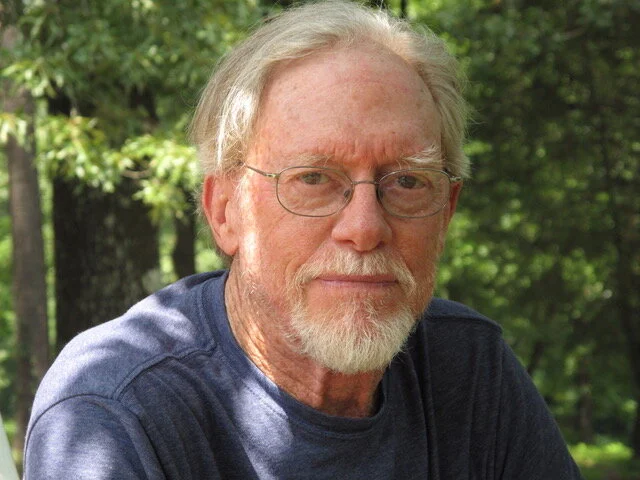Interview with artist Dan Thornhill
Dan Thornhill is an abstract artist living in Little Rock. His paintings and collages are a reflection of his joy of life and his color pallet is a celebration of the dry Texas landscape and the vibrant Arkansas foliage. Dan’s work is in private and corporate collections throughout Arkansas. He is represented in Hot Springs by Justus Fine Art Gallery and in Little Rock at Gallery 26 and M2 Gallery.
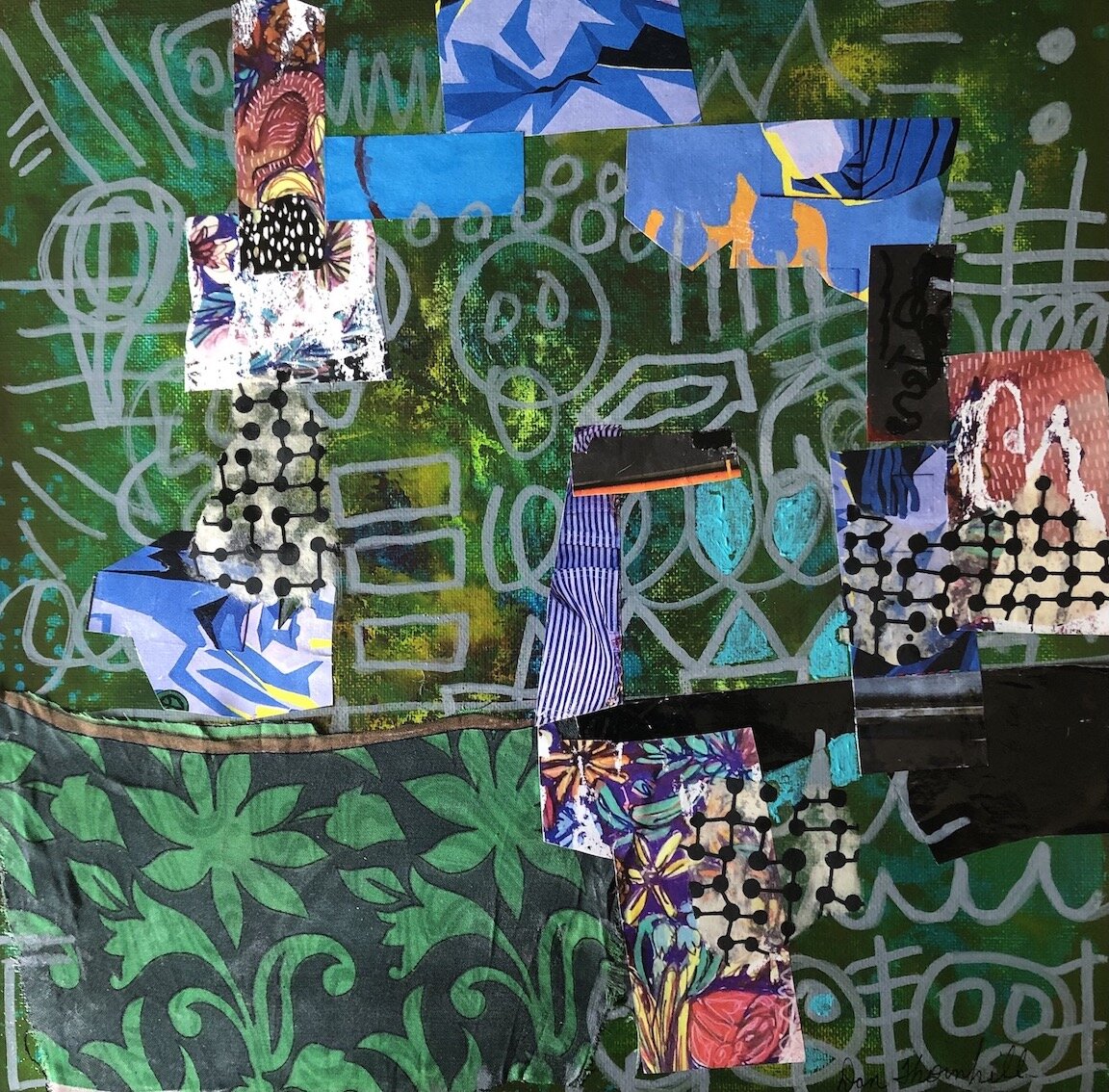
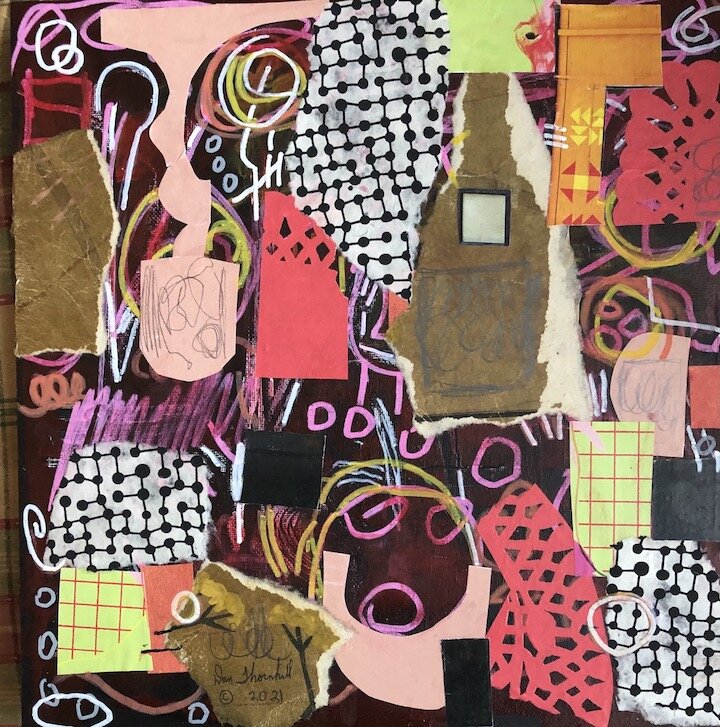
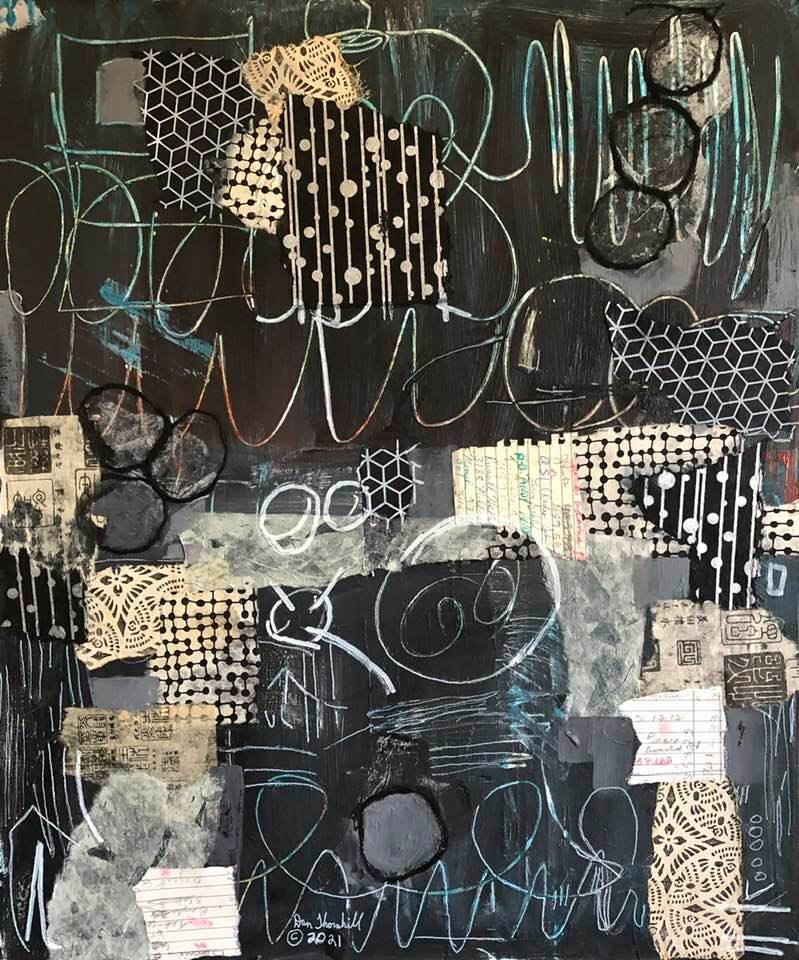
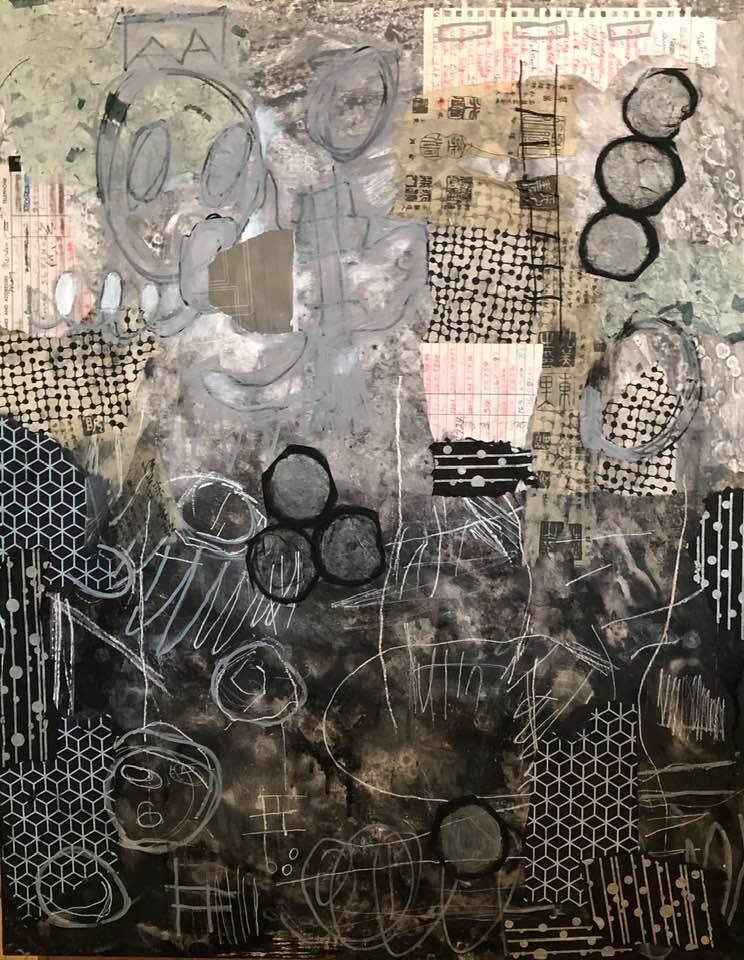
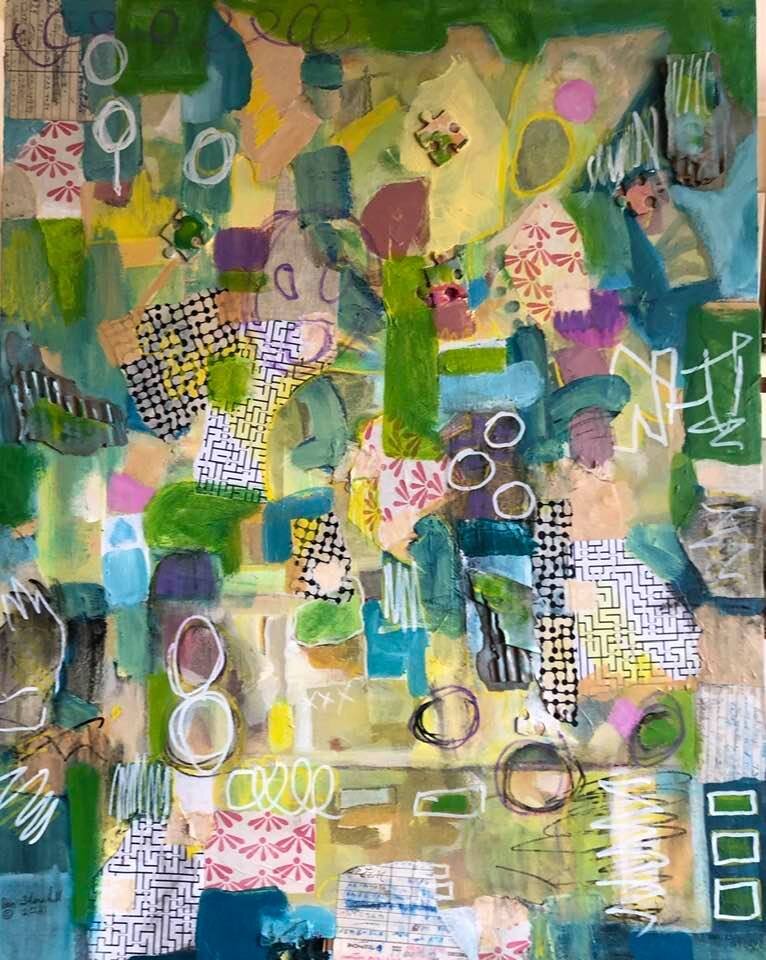
AAS: Dan, I believe you are from Dallas and trained as a biologist. Would you talk about your background and how you ended up in Little Rock?
DT: I was born in Dallas, Texas almost a year after WW2. Growing up during that time we had nothing compared to the young people today. We had no A/C, instead we had water coolers. I remember breathing the wet air coming from our water cooler - all you received was high humidity. During those hot Texas summers, it was oftentimes cooler outside than inside the house, so we spent a lot of time outside. Also, we had no TV. So, to survive boredom we had to be creative. I spent a lot of time drawing and coloring with my crayons. All through school. I was a daydreamer, and I spent time doodling or drawing. When I first went to college directly out of high school, I had no idea what I wanted to do with my life. Vietnam was the war of my generation. Personally, I wanted to avoid going to war, so I joined the U.S. Navy Reserve and spent 3 years on active duty stateside. After my military service, I was more than ready to go back to college. After college, I tried a lot of different jobs to try to determine what I wanted as a career. The federal government (OSHA) was training college graduates to become industrial hygienists. I was hired, and I had a 30-year career with different agencies of the federal government. In 1997, I was working in Fort Worth, and my boss asked me if I would be interested in a transfer to Little Rock. I said yes and have had no regrets.
Dan conducting a class at the Museum School.
AAS: I have had many artists say the experiences they had at the Museum School as a kid or young adult really solidified their love of creating. You taught there for several years, right?
DT: It was the Museum School at the then Arkansas Arts Center that awakened my creative spirit. For some unknown reason to me in 2002, I had an epiphany to start creating art on a higher level than being an amateur. Since then, I have discovered some talented people without the credentials from an art school. They were self-taught. After thinking about these artists, I have realized that artists have to be self-taught at some point. One’s experiences at art school eventually stop, and the artist is on their own to create. I taught painting at the Museum School for 4-5 years. It was a great experience, because teaching itself is an education. I loved it. It is also a great place to meet new friends and do some networking with other artists.
AAS: Let’s talk about some of your paintings. You are an abstract painter who has no fear of color, for sure! One I especially like is Hun on the Hunt. Would you talk about that work, and your use of color?
Hun on the Hunt, 48” x 48”, acrylic on canvas
DT: Oh, but I am scared or respectful of color, because we can fall in love too quickly with color. The problem is we become addicted to color - we want more and more of it. A common problem with novices is they use too much color. I remember in my earlier days of painting everything looked like a Christmas tree. I have learned to use a limited pallet with knowing the various color schemes. So, thinking about my palette is a constant in my work. Hun on the Hunt is an example of a painting with a limited palette. Looking at it you will see it has one major color (blue-green). The title does not necessarily fit with the painting except for the color - it is not representational. To be honest, I have difficulty naming a piece that is purely abstract, because it is non-representational. It makes no sense to me in giving a representational name to a non-representational subject. I have taken words from Lewis Carroll’s Jabberwocky to give a title to some of my abstract pieces. Hun on the Hunt was inspired by that nonsensical poem.
AAS: Some of your pieces are very rhythmic and ‘musical’ to me. Off The Grid, I think is a good example. I know that the relationship between abstract art and music is a controversial concept but how do you feel about it? Does music influence your work?
Off The Grid, 36” x 36”, acrylic on canvas
DT: I like this question about the relationship between abstract art and music. There is a strong relationship between these two. They are both abstract to a point. Music without words (instrumentals) are abstract. The early 20th century artists knew this. Wassily Kandinsky, a Russian Jew, knew about this relationship. He was one of the first, if not - as traditionally thought - the very first modern European artist to break through the representational barrier and carry painting into total abstraction. When in my studio painting if I’m listening to music, I prefer instrumentals. I want no words to influence my work.
I really like the mark-making in Off The Grid. This painting has a lot of layers which gives it the allusion of depth. This painting has a limited palette. It has a grid system that has been partly covered. This painting is purely abstract - not possible without Kandinsky. Off The Grid has markings that contribute to the idea of movement with repeated circles and lines. Listening to instrumental music while painting can be relaxing – but it can also be a distraction.
AAS: Your abstracts sometimes have elements of cubism. Who are some of artists who inspire you?
Untitled, 40” x 30”, acrylic and charcoal on paper
DT: Cubism was co-created by Georges Braque and Pablo Picasso in the early part of the 20th century. When drawing a portrait of figure, the artist first captures the envelope of the subject. It is a process of removal of negative space from the subject - in this process cubism is discovered. Many artists use cubism as part of their motif. I use cubism in some of my paintings - and many other shapes. I love the mark-making by Jean-Michel Basquiat. Sometimes I steal from Basquiat but never copy.
It was some time ago when I painted this piece. It was on paper, and I was experimenting at that time with mixed medium and I used acrylic paint and charcoal. This is a good example of how I use nature in my painting. There appear to be plants and human figures within this work. The horizontal line running across the bottom half of the painting serves as a grounding. The bundled objects move upward and circular - which takes the viewer's eyes around the painting. The color palette is cool in temperature giving a calming effect. Neutral colors help in the calming effect especially the greens. Cubism as a shape is found with the bundle of spaces.
AAS: This piece (Untitled) has a very Mexican/Spanish feel to its imagery and color. Is it from memories of your time in Texas?
Untitled, 48” x 48”, acrylic on canvas
DT: The Mexican/Spanish painting is one of my favorites. One can see cubism throughout this painting. Nature is an important motif. There is an orange and yellow structure in the upper left quadrant of the canvas - standing out as a focal point. This painting is on canvas, and it was painted using acrylic paint and charcoal. Mexican/Spanish culture have greatly influenced the culture of Texas. Prior to 1836, it was the culture of Texas. I was totally unaware of this influence until recently an interior designer mentioned to me that I have a Southwestern pallet. I do appreciate the Mexican/Spanish culture of Texas with their lively and bright colors. These color combinations are written into my artist's DNA. They are there deep in my psyche - unaware to me.
“It is great when someone interprets one of my paintings with ideas I never thought of.”
AAS: Which painters inspire you?
DT: I admire the work of Henri Matisse because he was a colorist. Colorist is defined as a person who uses color skillfully. I mentioned Picasso earlier, but I am not impressed with his use of color - it is Picasso's linear work that impresses me. Matisse was an important figure in the Fauvist movement, which was characterized by work that appears flat on the canvas and the use of unnatural colors. Trees do not have to be green and brown, and people can be blue and green, and so forth. I am inspired by the Fauvist. Their use of color is exciting and beautiful.
AAS: You have done some wonderful collage pieces. Some smaller and some large. I especially like Sneaking A Look and this ‘Untitled’ work.
Untitled, 48” x 36”, acrylic and collage on paper
DT: Collages are new to my work. I took a class with Diane Harper (at the Museum School) and found doing collages is freeing. I used small canvas boards (8" x 8"; 12” x 12") to practice on when I found really enjoyed it. My larger pieces are my best efforts, I think.
The last painting here is a rather large canvas. It is one of my first attempts at creating a large collage. Like my other paintings there is a horizontal line running at the top portion of the painting. There is a lot of mixed media in this artwork: acrylic paint, acrylic marker, paper, fabric, copper tape and gel medium. Orange and blues dominate this piece. The orange colors are cool as the blue is naturally cool. Like the first painting it has a calming effect.
Sneaking A Look, 12” x 12”, acrylic and collage on paper
AAS: What did you enjoy most about teaching painting?
DT: I enjoyed the process of teaching especially teaching serious art students. Those that come prepared and ready to work. It is a reward for the teacher to see the progress of their students. Unfortunately, not all students are serious about their art but want to play. This part of teaching can be frustrating.
AAS: When you approach a new painting, are you inspired by particular colors or certain shapes? I really like Adam’s Paradise. It is an explosion of color and shape. What is your process or is it totally spontaneous?
DT: Adam’s Paradise is special to my family. Adam was my stepson who died from an accident several years ago. I did not want to paint a gloomy piece of art. Adam was a bright light in the world. Many people loved him. There is a lot of symbolism in Adam’s Paradise. It represents life and death and eternity. In the water there is a human figure with a crozier. There is a single dark image in the background - representing Adam's new life in eternity. These are all Christian related imagery. My paintings are a process of revealing - it is an intuitive process. Adam Taylor, rest in peace.
Adam’s Paradise, 48” x 48”, mixed media on canvas
AAS: Your work is very joyous. Is that a reflection of your own personality?
DT: I am a positive and happy individual. I'm easy going and non-judgmental. My abstract work does reflect who I am as a person. I want viewers to look and study my paintings. It is great when someone interprets one of my paintings with ideas I never thought of. I believe that abstraction touches one's subconscious - it is an unplanned event. The artist is creating by having their own voice - I put myself into my work.



